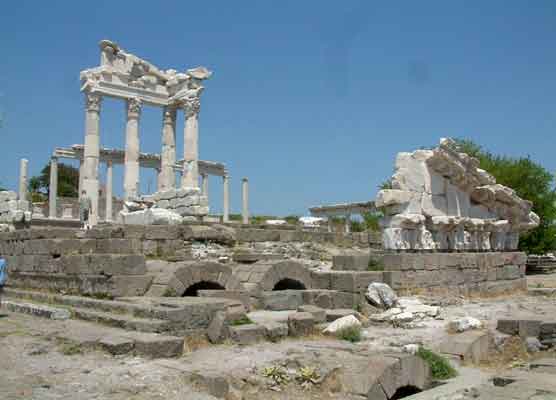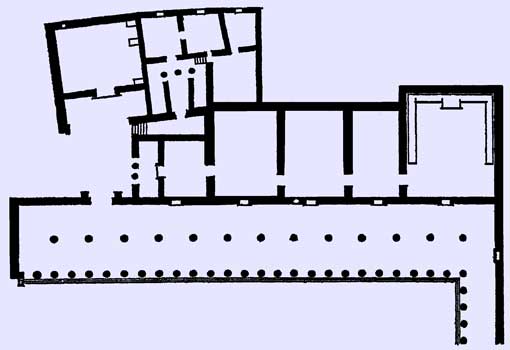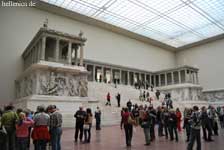.
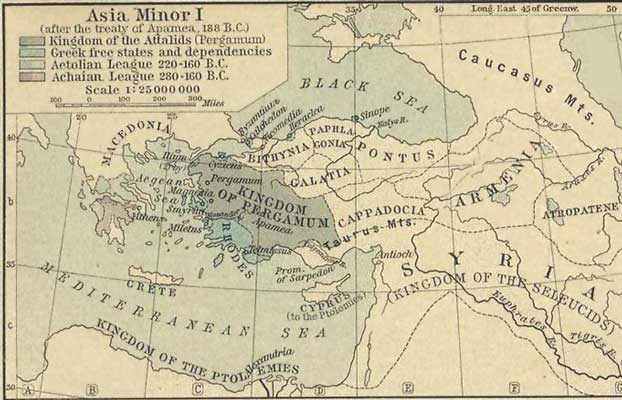
The Kingdom of Pergamon (colored olive) shown at its greatest extent in 188 BC.
Pergamon or Pergamum (Greek: Πέργαμος, modern day Bergama in Turkey, 39°7′N 27°11′E) was an ancient Greek city, in Mysia, northwestern Anatolia, 16 miles from the Aegean Sea, located on a promontory on the north side of the river Caicus (modern day Bakırçay), that became an important kingdom during the Hellenistic period, under the Attalid dynasty, 282-129 BC.
The Attalids, the descendants of Attalus, the father of Philetaerus who came to power in 282 BC, were among the most loyal supporters of Rome among the Hellenistic successor states. Under Attalus I, they allied with Rome against Philip V of Macedon, during the first and second Macedonian Wars, and again under Eumenes II, against Perseus of Macedon, during the Third Macedonian War. For support against the Seleucids, the Attalids were rewarded with all the former Seleucid domains in Asia Minor.
The Attalids ruled with intelligence and generosity. Many documents survive showing how the Attalids would support the growth of towns through sending in skilled artisans and by remitting taxes. They allowed the Greek cities in their domains to maintain nominal independence. They sent gifts to Greek cultural sites like Delphi, Delos, and Athens. They defeated the invading Celts. They remodeled the acropolis of Pergamum after the Acropolis in Athens. The Great Altar of Pergamon is in the Pergamon Museum of Berlin.
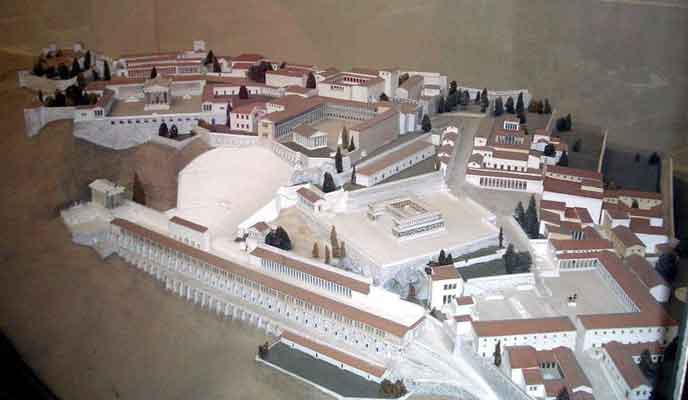
Model of the city of Pergamon, Staatliche Museen Berlin
Pergamon had the second best library in the ancient Greek civilisation, after Alexandria. When the Ptolemies stopped exporting papyrus, partly because of competitors and partly because of shortages, the Pergamenes invented a new substance to use in codices, called pergaminus or parchment after the city. This was made of fine calf skin, a predecessor of vellum and paper.
When Attalus III died without an heir in 133 BC he bequeathed Pergamum to Rome, in order to prevent a civil war.
Close to the city was a sanctuary of Asclepius, the god of healing. In this place people with health problems could bath in the water of the sacred spring, and in the patients' dreams Asklepios would appear in a vision to tell them how to cure their illness. Archeology has found lots of gifts and dedications that people would make afterwards, such as small terracotta body parts, no doubt representing what had been healed.
In the first century AD, the Christian Church at Pergamon was one of the Seven Churches to which the Book of Revelation was addressed (Revelation 1:11, NRSV).
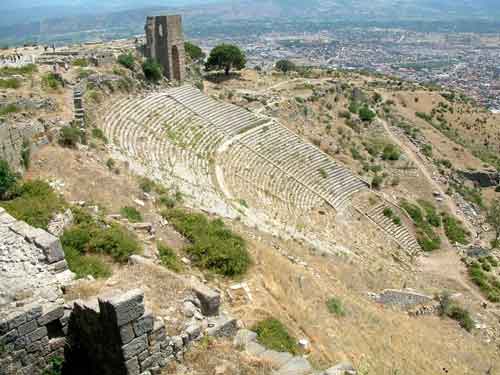
K. Inadomi's Private Library
References
Hansen, Esther V. (1971). The Attalids of Pergamon. Ithaca, New York: Cornell University Press; London: Cornell University Press Ltd. ISBN 0801406153.
Andrew Stewart , Attalos, Athens, and the Akropolis : the Pergamene "Little Barbarians" and their Roman and Renaissance legacy -, Cambridge University Press 2004 ISBN: 0521831636
| Ancient Greece
Science, Technology , Medicine , Warfare, , Biographies , Life , Cities/Places/Maps , Arts , Literature , Philosophy ,Olympics, Mythology , History , Images Medieval Greece / Byzantine Empire Science, Technology, Arts, , Warfare , Literature, Biographies, Icons, History Modern Greece Cities, Islands, Regions, Fauna/Flora ,Biographies , History , Warfare, Science/Technology, Literature, Music , Arts , Film/Actors , Sport , Fashion --- |
Retrieved from "http://en.wikipedia.org/"
All text is available under the terms of the GNU Free Documentation License


